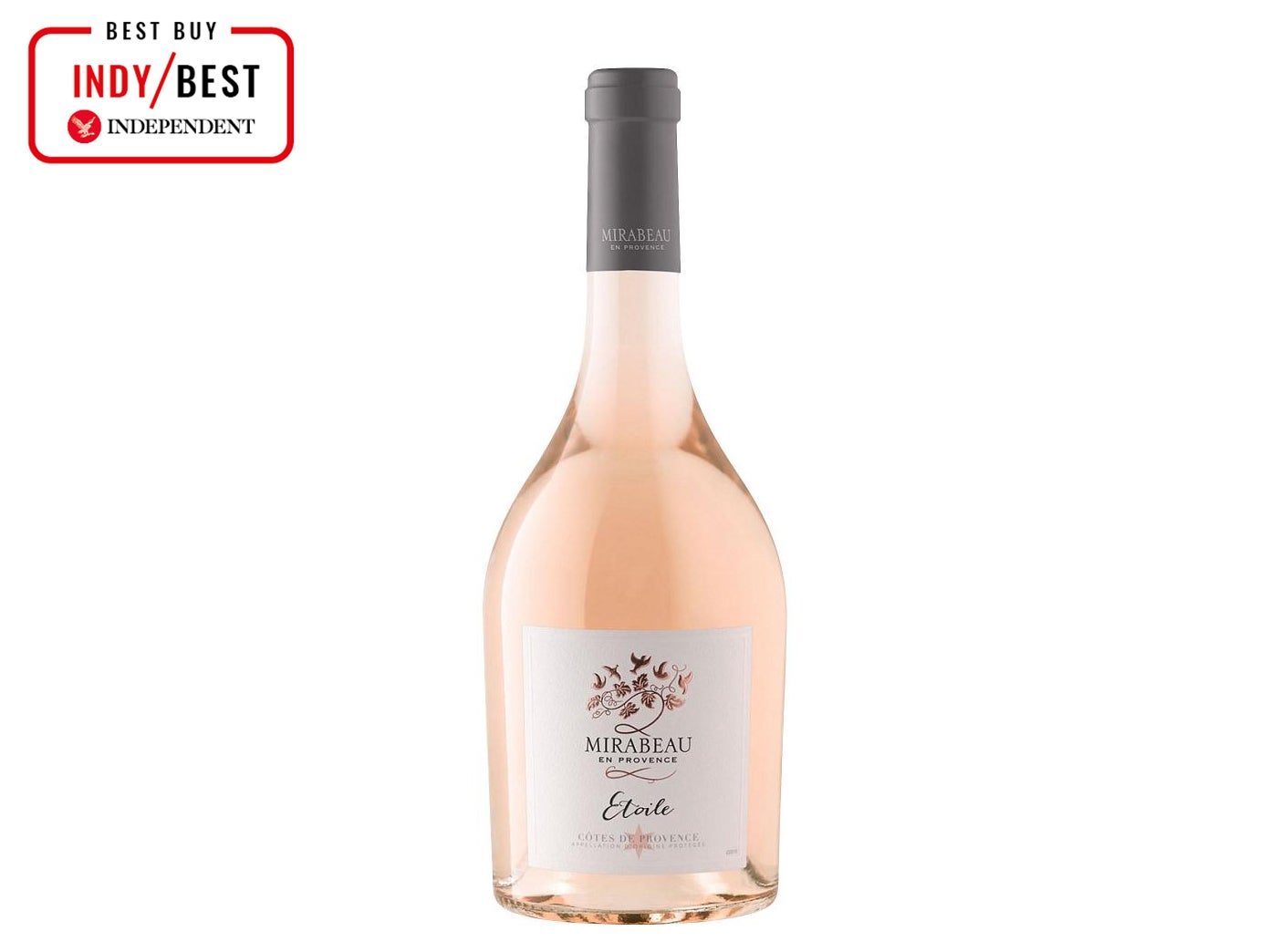
The Independent's journalism is supported by our readers. When you purchase through links on our site, we may earn commission. Why trust us?
10 best Côtes de Provence rosé wines to sip whatever the weather
Transport yourself to the south of France with one of these pale pink tipples
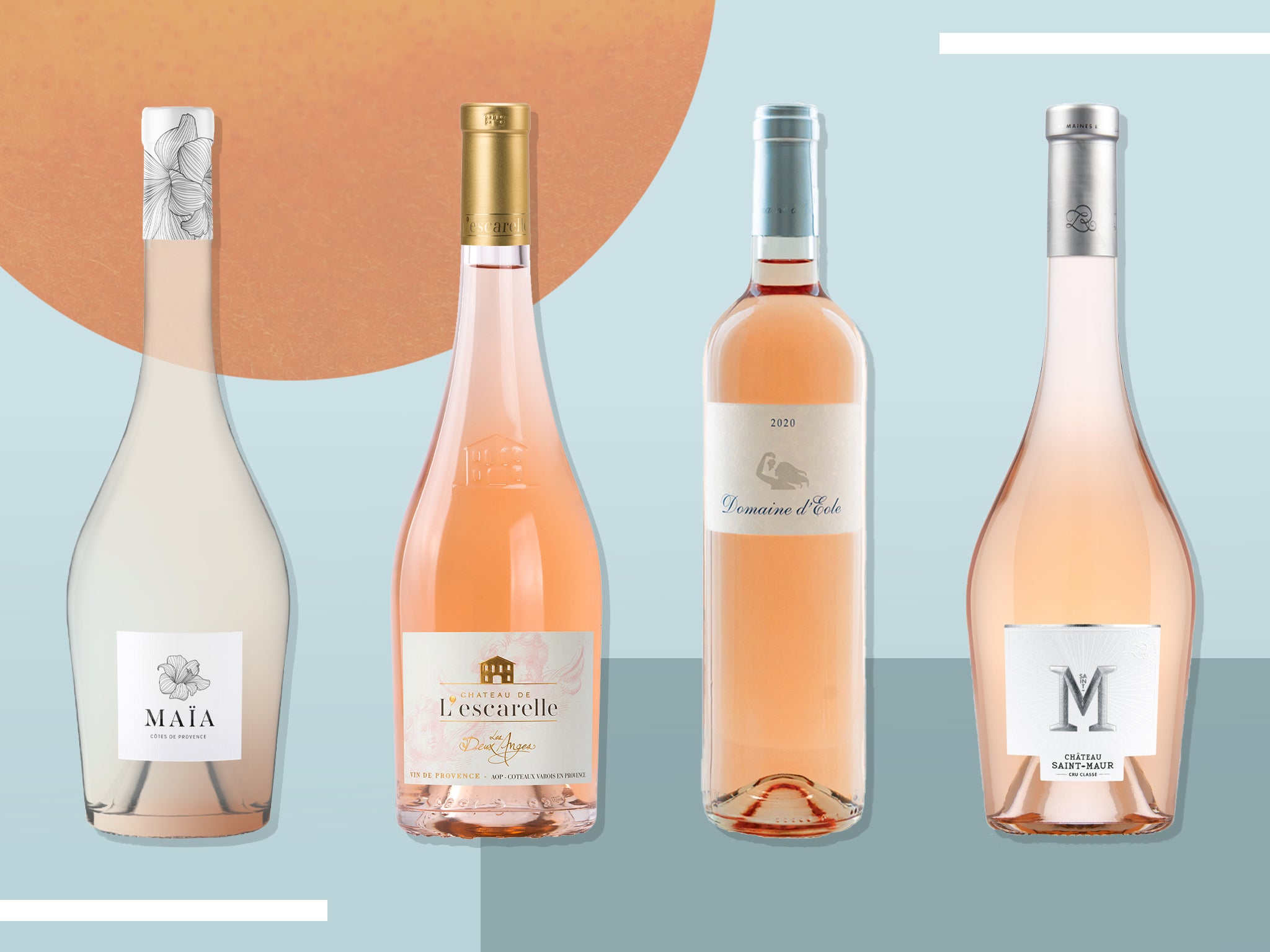
The gorgeous weather over the past week has not only heralded the start of summer but for many, the start of rosé reason. And, for lovers of a glass of “pink” that has now come to mean only one thing – Provencal rosé.
Sometimes tall and slim, often elegantly bulbous or even slightly zany, but always distinctive in its very pale colour, varying only in subtle shades of salmon tinted pink, a bottle of Provencal rosé has probably the most recognisable “look” of any wine on sale.
Rosé is made, to varying degrees, almost everywhere wine is made, but it has always been a particularly southern French thing and that is now dominated by rosé made in Provence – the sunny south-eastern corner of France, including the fashionable Riviera around St Tropez and Cannes.
In Provence, rosé is made mainly from various combinations of the red wine such as grapes syrah, grenache and cinsault but sometimes also with a little cabernet sauvignon and/or white vermentino (aka rolle) added.
It once was, as elsewhere, mostly only ever seen as a fun, gluggable wine, best served very cold on a warm days as an aperitif and with simple foods. But, as more and more recognised its virtues, sales of all rosés began to increase and, in the UK, soon occupied more than just a niche in supermarket shelves, particularly in summer.
Read more:
Rosé is incredibly food-friendly, particularly with all tomato-based Mediterranean cuisine, but also with pizza and pasta. It also pairs nicely with salads, mild cheeses, fish and particularly with any kind of shellfish and crustacea such as crab, prawns or lobster. And it is a must with picnics and a lot of barbecued foods, like grilled fish and vegetables – the perfect summer wine.
The runaway success of Provence’s whispering angel – see below – launched around 2006, accelerated both the growth of rosé and launched the fashion for the elegantly bottled, pale pink, bone dry style, as opposed to the darker red, fruitier versions. And the glamorous pink bottles perfectly fitted the lifestyle image of Provence and sun drenched Cote d’Azur.
Despite the copycats from everywhere that now fill the supermarket shelves, Provence has become the influential benchmark, so here are ten of the best Provencal rosés for your summer delectation.
You can trust our independent reviews. We may earn commission from some of the retailers, but we never allow this to influence selections, which are formed from real-world testing and expert advice. This revenue helps to fund journalism across The Independent.
The best provence rosés for 2021 are:
- Best overall – Mirabeau etoile rosé 2019, 13%: £14.00, Sainsburys.co.uk
- Best classic provencal rosé – Chateau d’Esclans whispering angel 2020, 13%: £16.95, Mrwheelerwine.com
- Best celebrity backed rosé – Miraval Cotes du Provence rosé 2019, 13%: £13.90, Thebottleclub.com
- Best for shellfish – Kylie Minogue Cotes de Provence rosé 2020, 13%: £15.00, Morrisons.com
- Best new provence rosé– Maia Cotes de Provence 2020, 13%: £18.90, Somersetwinecompany.com
- Best organic wine– Chateau L’Escarelle Les Deux Anges rosé 2020, 13%: £15.99, Kwoff.co.uk
- Best for a stylish bottle – Ultimate Provence Cote de Provence 2020, 12.5%: £17.00, Thewinecaverns.com
- Best for provencal bouillabaisse – Chateau Saint-Maur Cru Classe 2020, 13%: £16.79, Vinatis.co.uk
- Best for a smart dinner party – Château La Mascaronne rosé, Côtes de Provence 2020, 13.5%: £18.28, Laywheeler.com
Mirabeau etoile rosé 2019, 13%, 75cl

Best: Overall
It was only in 2008 that London couple Stephen and Jeany Cronk and their family relocated to Provence with a dream to make top-end rosé. And right from the start of their first vintage in 2011, it was clear they were on to something, having found the right vineyards and enlisted some experienced local help.
Now based on a 20-acre estate inland from St Tropez, their wines are serious competitors, sold in 50 countries, multi-award-winning and display all the right Provencal essentials – great bottles, stylish, very dry, and very food-friendly. So, support the British winemakers able to challenge the locals at their own game; the grenache dominated etoile, full of fresh vibrancy, with citrus and apricot notes, is only one of several great wines they make.
Chateau d’Esclans whispering angel 2020, 13%, 75cl
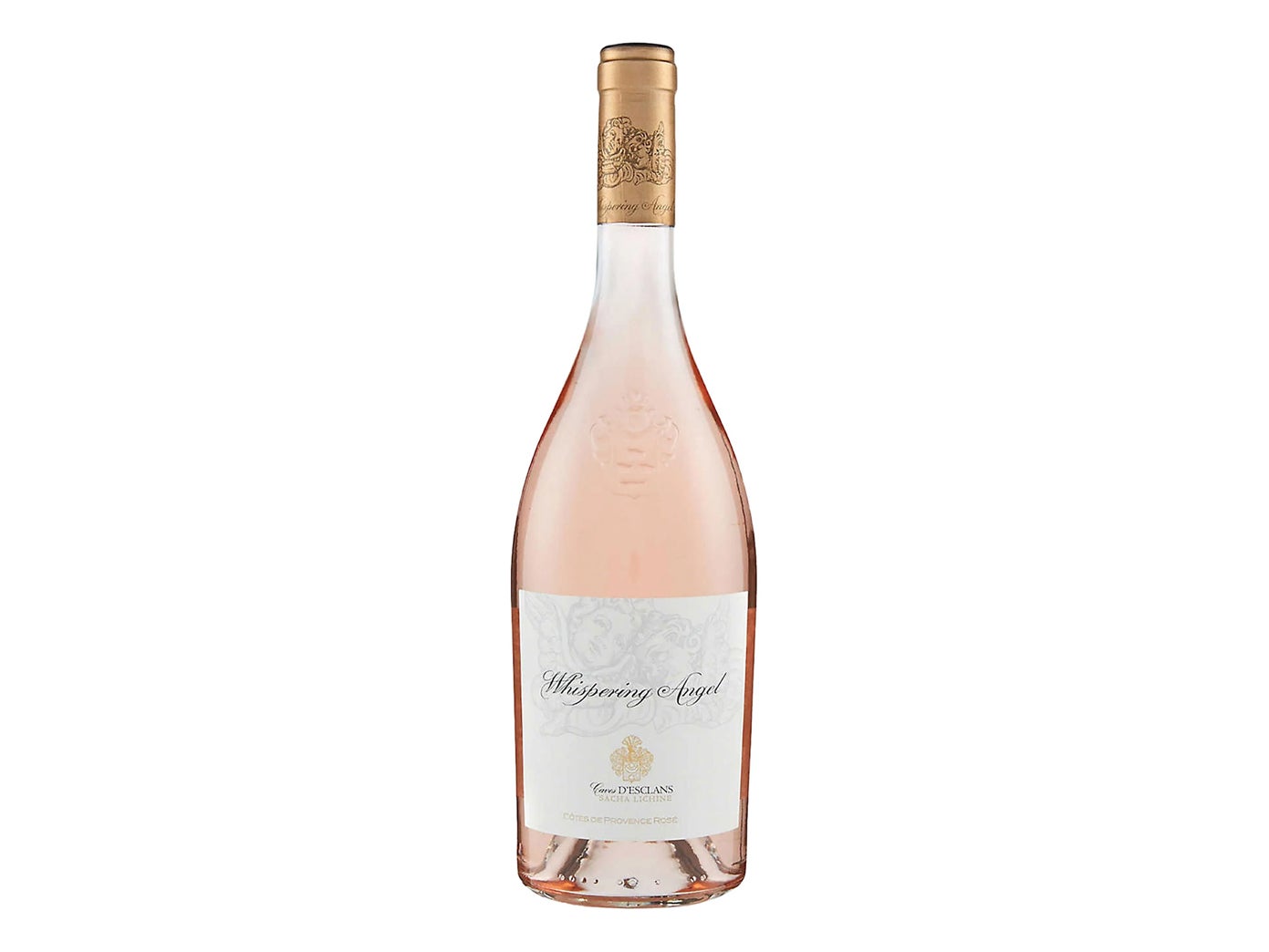
Best: Classic provencal rosé
In the early 2000’s Sacha Lichine, scion of a great Bordeaux wine dynasty, invested in a historic Provencal estate, and soon produced Chateau D’Esclans Whispering Angel. In an attractive sculptured bottle, with an equally elegant label, the blend of cinsault, grenache and vermentino is very pale, very dry, with subtle flavours of orange and/or tangerine, some very restrained red fruits and a flick of dried herbs and spice. And it cost a good deal more than most other rosés.
Almost at a stroke, a style was defined and the rosé was transformed into an elegant upmarket affair, sales boomed in the crucial United States markets and across Europe. Soon, not only every smart restaurant on the Riviera was serving Whispering Angel, but within a short space of time all the copycats that followed. Is the original still the best? It’s certainly one of the best.
Miraval Côtes du Provence rosé 2019, 13%, 75cl
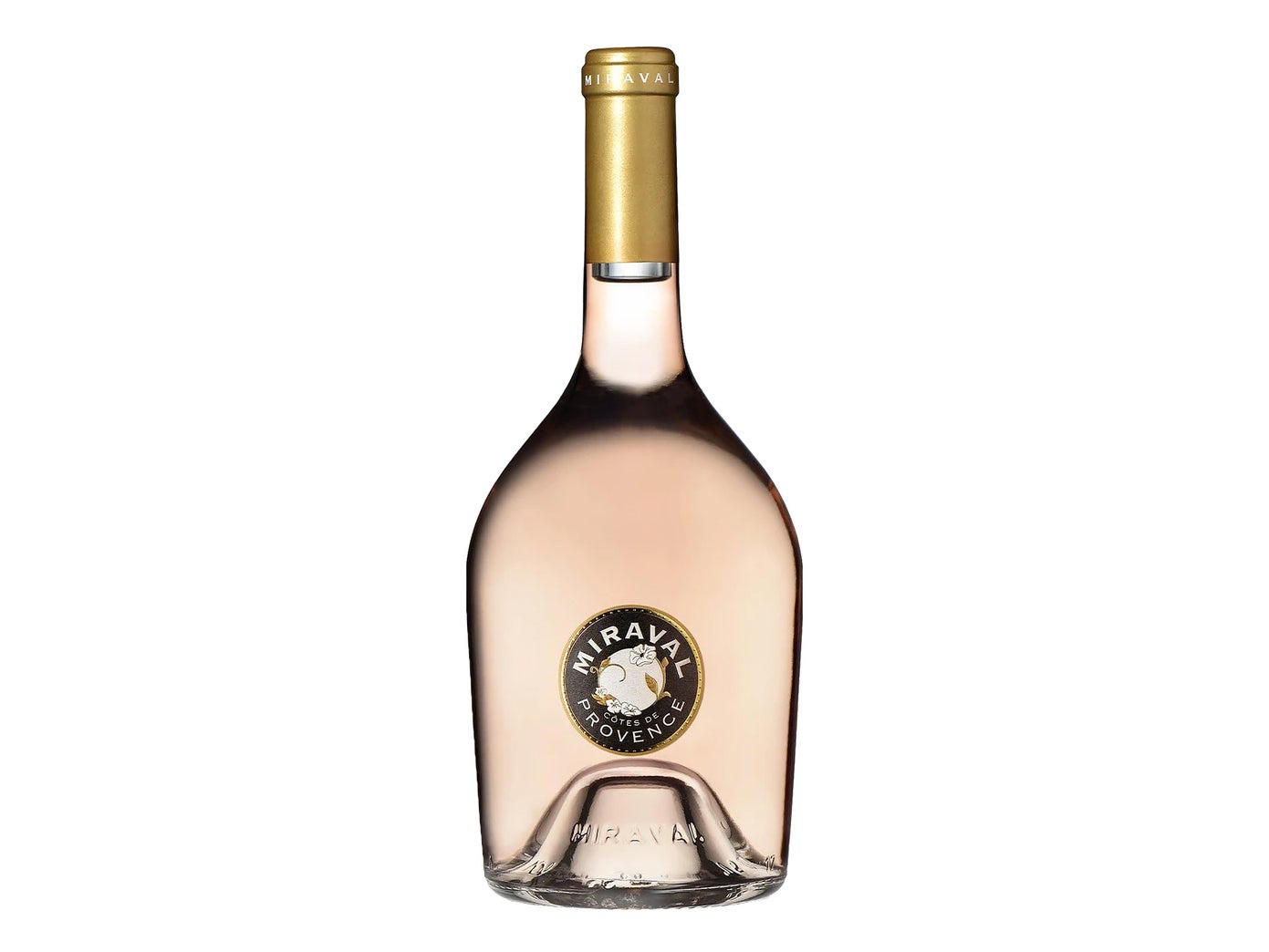
Best: Celebrity backed rosé
The already glossy image of the new Provence rosé went stratospheric in 2013 with the launch of the first vintage of Miraval. It’s produced on the huge estate owned, since 2008, by Angelina Jolie and Brad Pitt and in conjunction with the renowned Perrins family, makers of seriously top-end Rhone wines at Chateau de Beaucastel.
Five years on from starting their divorce proceedings, the estate is now said to be at the centre of their continuing negotiations, but thanks to their expert partners, the wine is as reliably great as ever. Slightly darker and more full and intense than most other Provencal rosés, it’s a perfect match for slightly weightier foods or your finest crustacea.
Kylie Minogue Côtes de Provence rosé 2020, 13%, 75cl
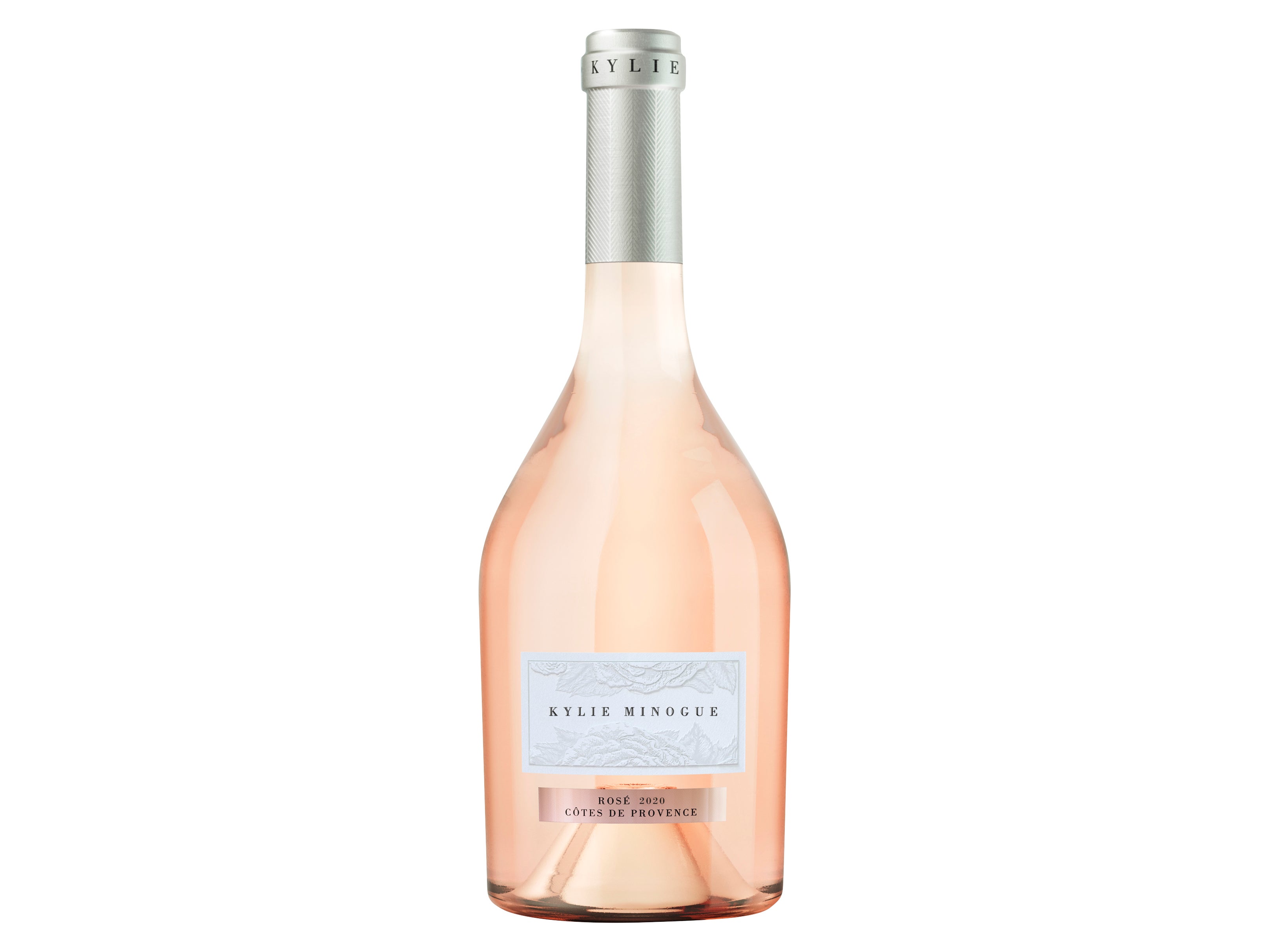
Best: For shellfish
Celebrity named wines can often be greeted with a certain amount of cynicism. No one is expecting pop diva Kylie to be tending the grapes or supervising the winery, it’s not her specialist subject, any more than you might expect Brad or Angelina to be out there pruning vines. That said, one assumes she took some part in creating this and so full marks to all concerned.
This is a pitch perfect rosé, made for her label on a prestigious estate just north of St Tropez, which also makes excellent wines under its own name, from a combination of cinsault grenache and syrah and housed in the appropriately elegant bottle. The crisp, zesty, red berry fruit flavours is a terrific buy, elegant enough for your dinner party, whatever the soundtrack.
Maia Côtes de Provence 2020, 13%, 75cl
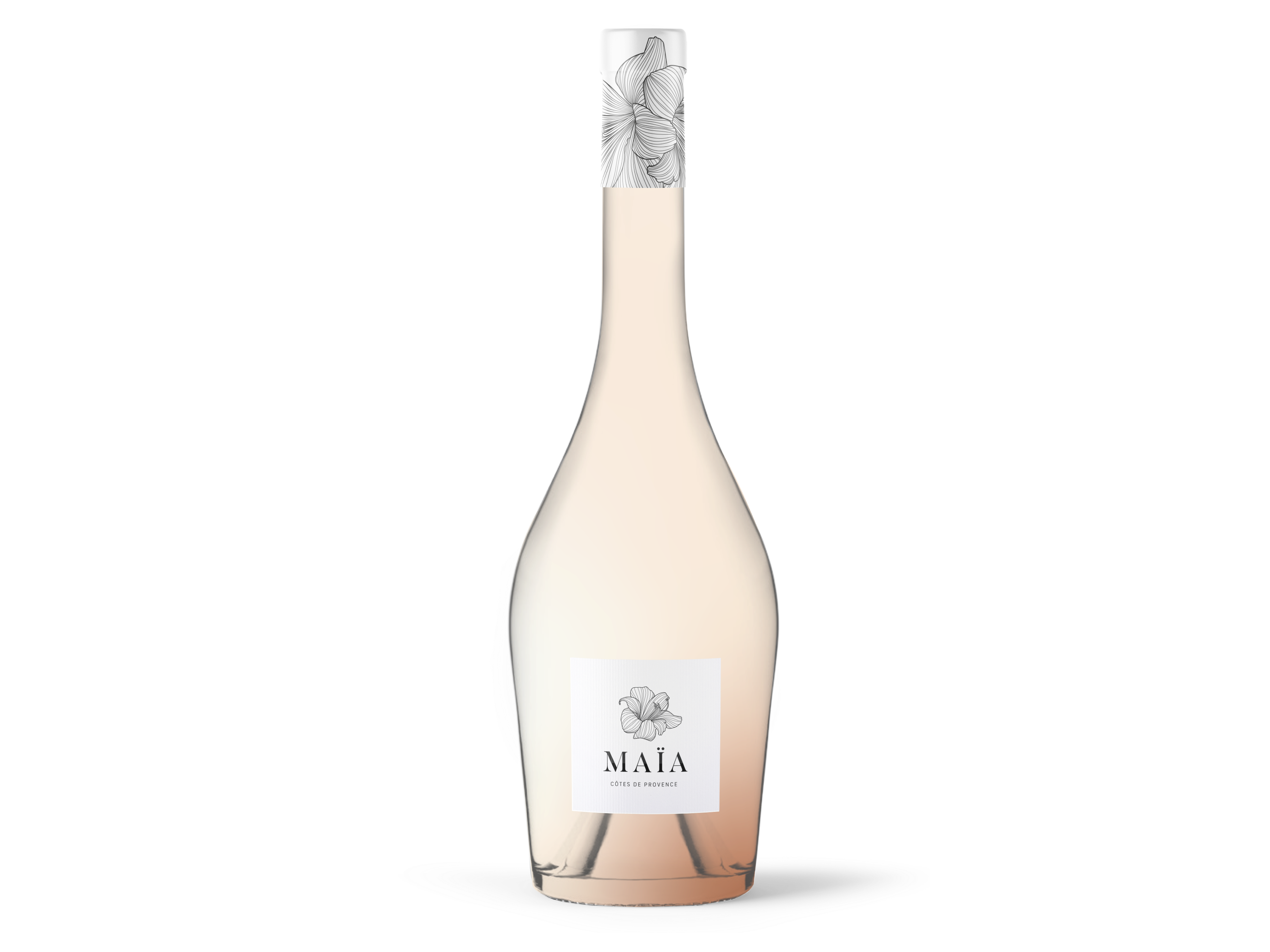
Best: New Provence rosé
Mirabeau is not the only British operation in Provence. Maia, a grenache dominated blend from a vineyard close to the sea, is a collaboration between two British masters of wine, Liam Steevenson and Mark Pygott and again ticks all the right boxes. A great, stylish bottle, paler than pale, a lovely orange peel scented bouquet and red fruits on the palate, with a vibrant freshness in the mouth, with just the slightest hint of salinity. Simply gorgeous – one can almost hear the seagulls and sense the Mediterranean sea gently lapping on the beach. Still, might get there next year now.
Chateau L’Escarelle les deux anges rosé 2020, 13%, 75cl
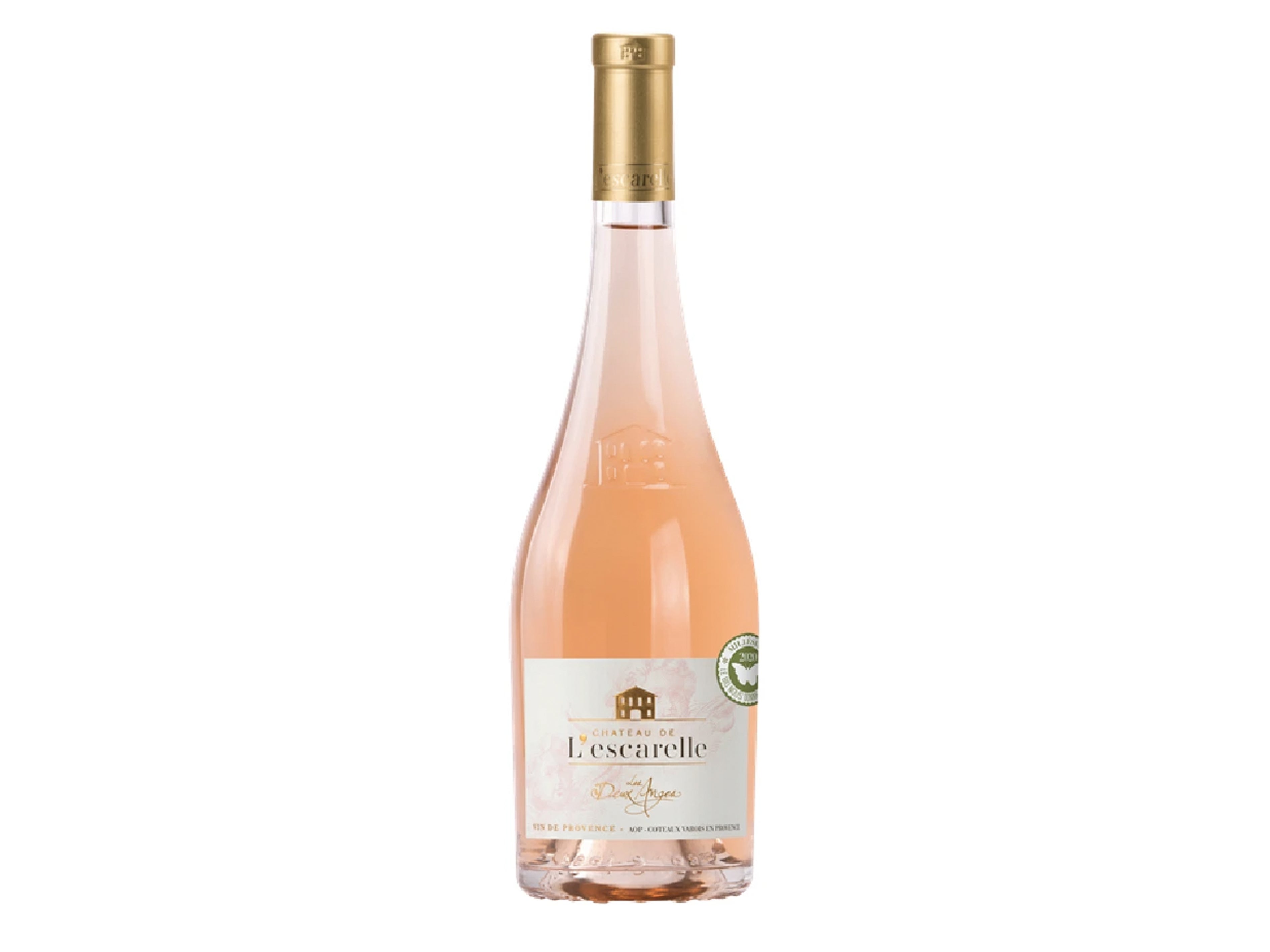
Best: Organic wine
The organically farmed vineyards of the ancient estate of Chateau de L’Escarelle, which have been recognised for adhering to strict environmental standards are, unlike many Provencal estates, sited 500 metres above sea level on the slopes of the Montagne de La Loube; this gives a really distinctive fresh character to the wines. And also unlike most of the others here, this blend is dominated by syrah, with smaller proportions of grenache and cinsault and so has a whiff of spice underpinning the red fruit and citrus flavours, with a just a hint of tropical fruits. A lovely wine for anything involving ratatouille, the classic Provencal stew of peppers, tomatoes and aubergines.
Ultimate provence Cote de Provence 2020, 12.5%, 75cl
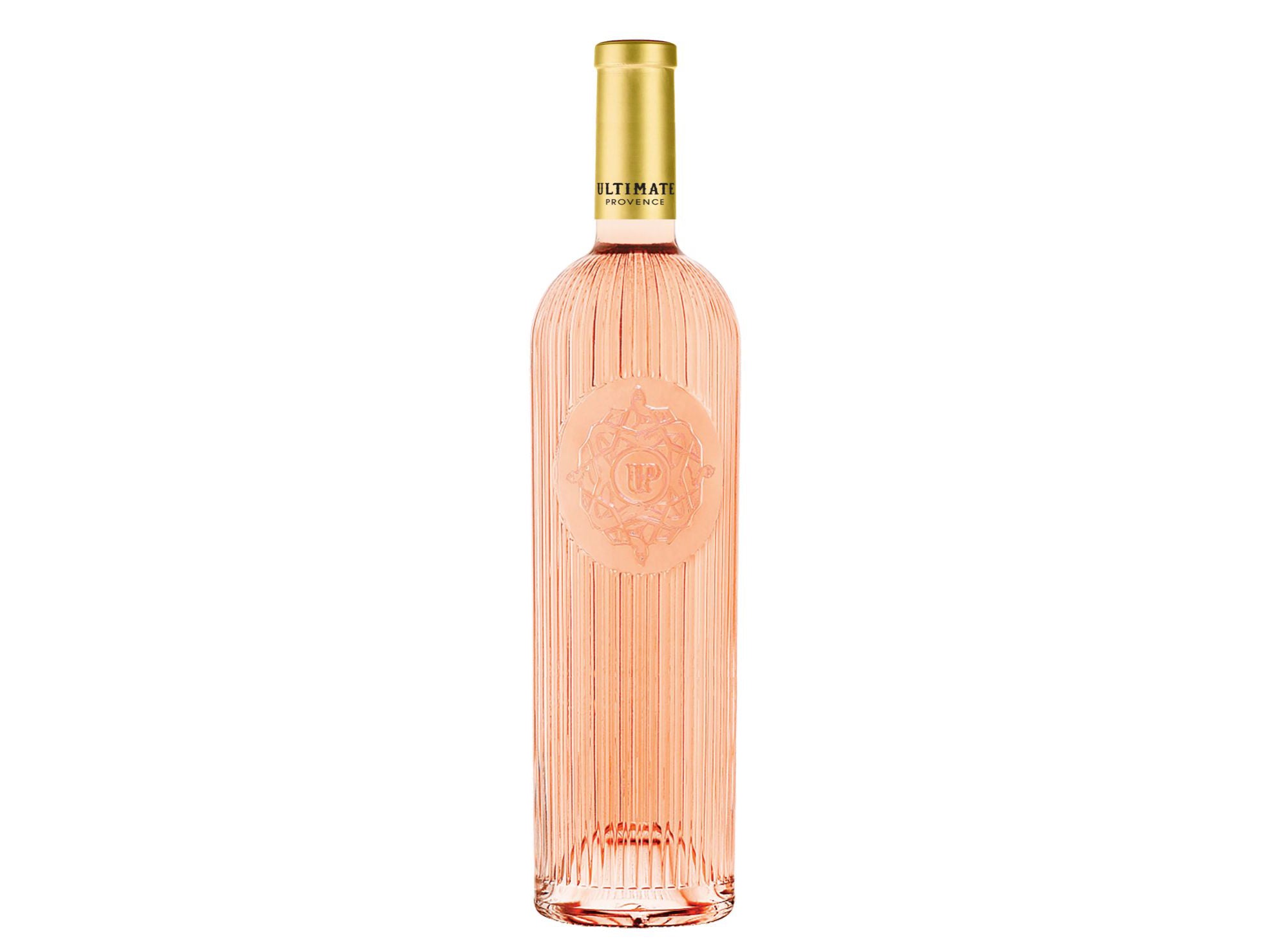
Best: For a stylish bottle
From a vineyard on the edge of the Plaine des Maures nature reserve in Provence, the Ultimate Provence winery is another estate committed to farming its land organically. The gorgeous, ribbed retro style bottle – even with matching designer cork – houses a stunning rosé, a blend of grenache, syrah, vermentino and cinsault, which is full of red berry flavours and very subtle hints of cinnamon and ginger. Completely beguiling and setting a new benchmark for excellence.
Chateau Saint-Maur cru classe 2020, 13%, 75cl

Best: For provencal bouillabaise
Chateau Saint-Maur is an ancient estate a few kilometres from St Tropez and is one of just 22 estates in the region to be granted Cru Classe status due to the quality of their wines. This rosé is dominated by grenache and cinsault, but there are also smaller quantities of syrah, mourvedre and cabernet sauvignon. This is therefore one of the more complex rosés with terrific red fruit and citrus notes, with some floral aromas. One to save for your finest seafood or a big bowl of Provencal’s fish soup, bouillabaise, best accompanied by another local speciality, aoli or garlic mayonnaise.
Château La Mascaronne rosé, Côtes de Provence 2020, 13.5%, 75cl
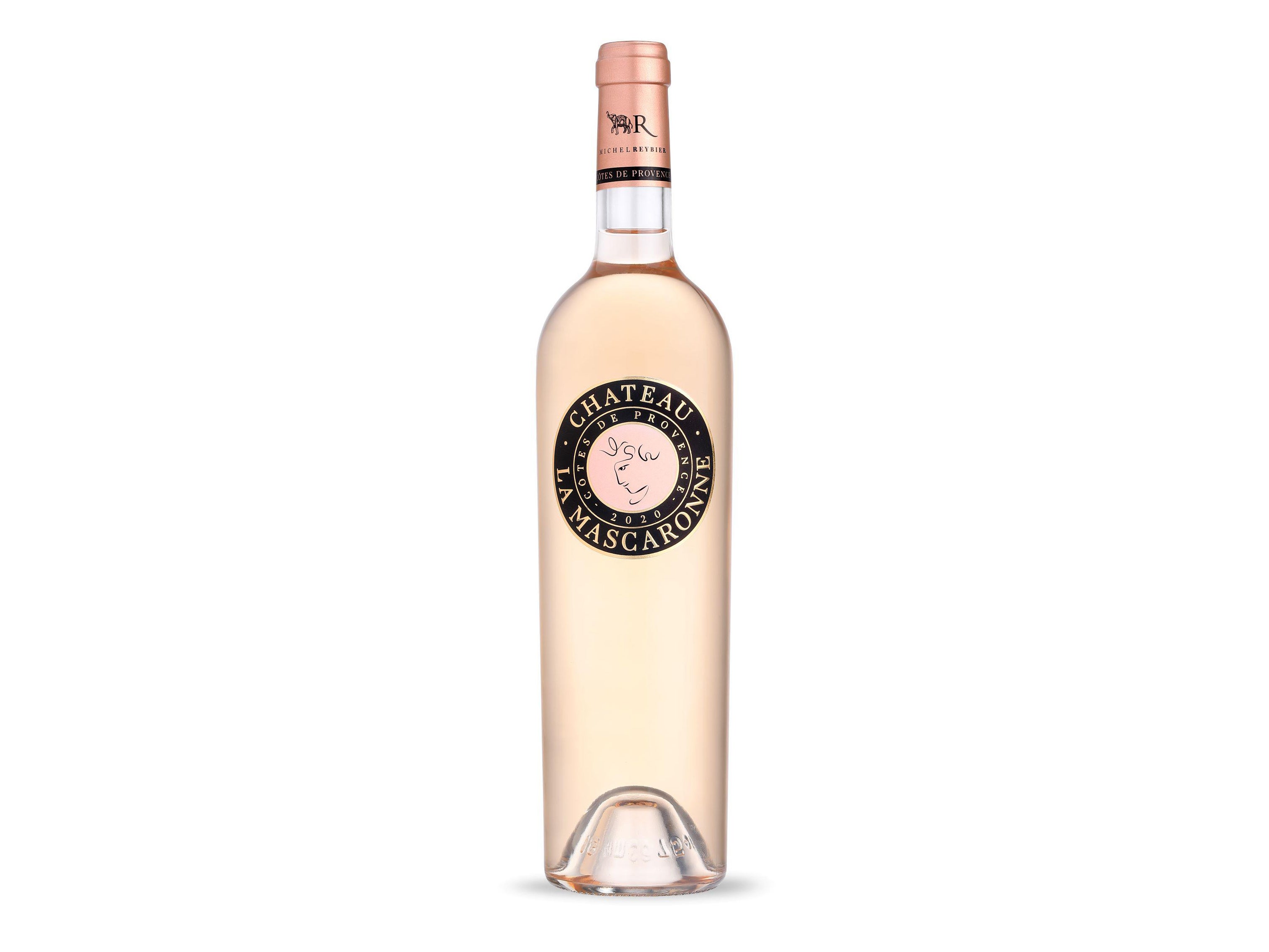
Best: For a smart dinner party
A couple of decades ago, the big hitters of Bordeaux would probably not have deigned to invest in the cheap gluggers of Provence, but now is another story. This rosé is the first vintage of a venture by Michel Reybier, owner of Château Cos d’Estournel, an esteemed Grand Cru classes Bordeaux estate, who has bought this Chateau near the village of Le Luc, which is now run by Tom Rove, formerly the winemaker at Miraval. Another cinsault and grenache dominated blend, it is elegant, refined, just on the darker side of salmon pink and exudes class throughout its long finish.
Domaine d’Eìole, Coteaux d’Aix-en-Provence 2020, 12.5%, 75cl
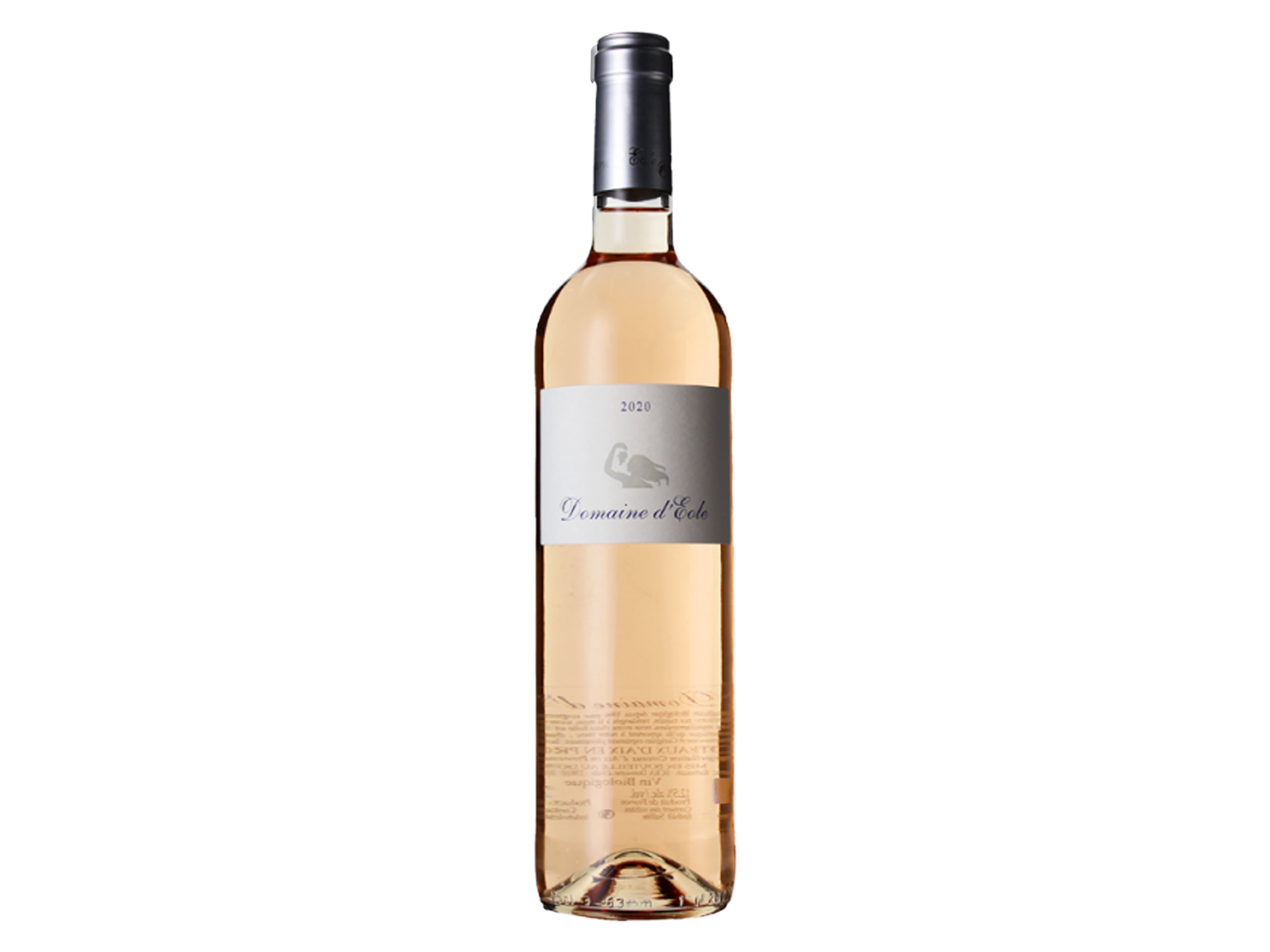
Best: For picnic foods
From another organic estate in the Coteaux d’Aix-en-Provence appellation – one of the three that make up the totality of Provence – in the hillsides near the lovely towns of Aix and Saint-Remy this is a grenache dominated blend, which also includes small parcels of counoise and carignan. The sum is greater than the parts and creates an elegant, berry flavoured blend, which has characteristic dryness and freshness, with enough fruit to create a lively presence on the palate.
The verdict: Côtes de Provence rosé
The reliably high standards in quality and style that have now been achieved by Provencal rosé make it very difficult to select a top wine and all these wines would neither disgrace a picnic blanket or a dinner table. But in terms of sheer Provencal quality for the price, we are going to back British today and, narrowly nominate the Mirabeau etoile rosé 2019 as our best buy for this summer.
Voucher codes
For the latest offers on alcohol, try the links below:
Enjoy red, white, sparkling and more delivered to your door with the best online wine shops